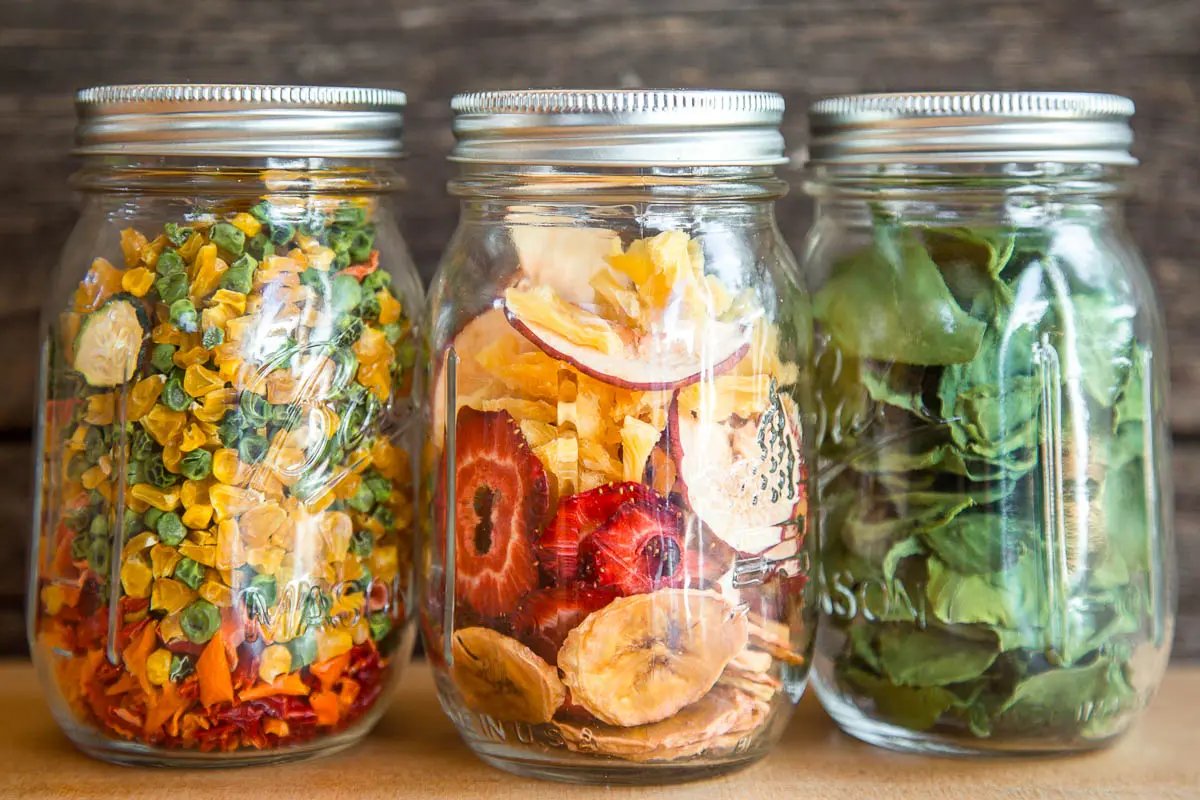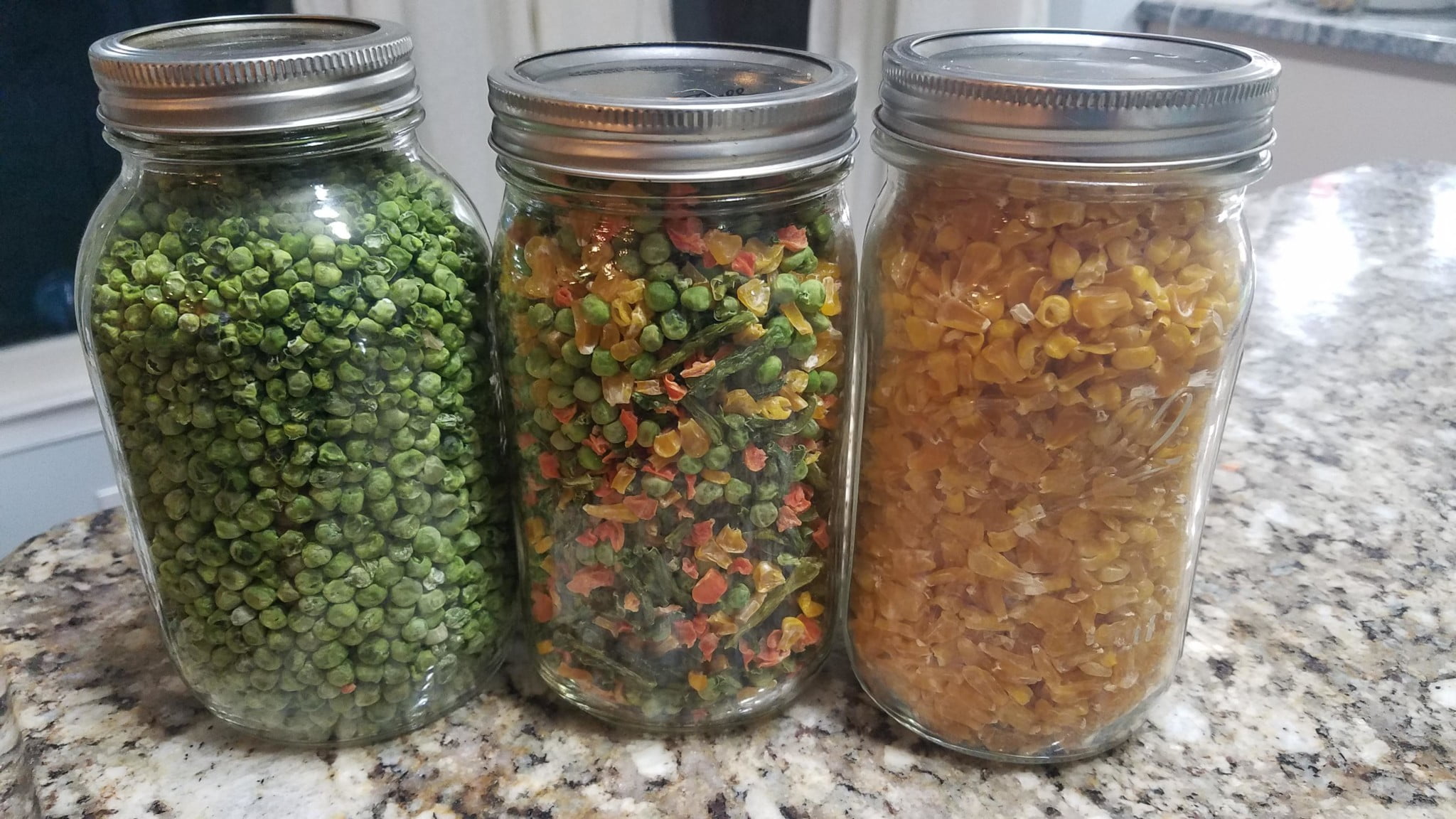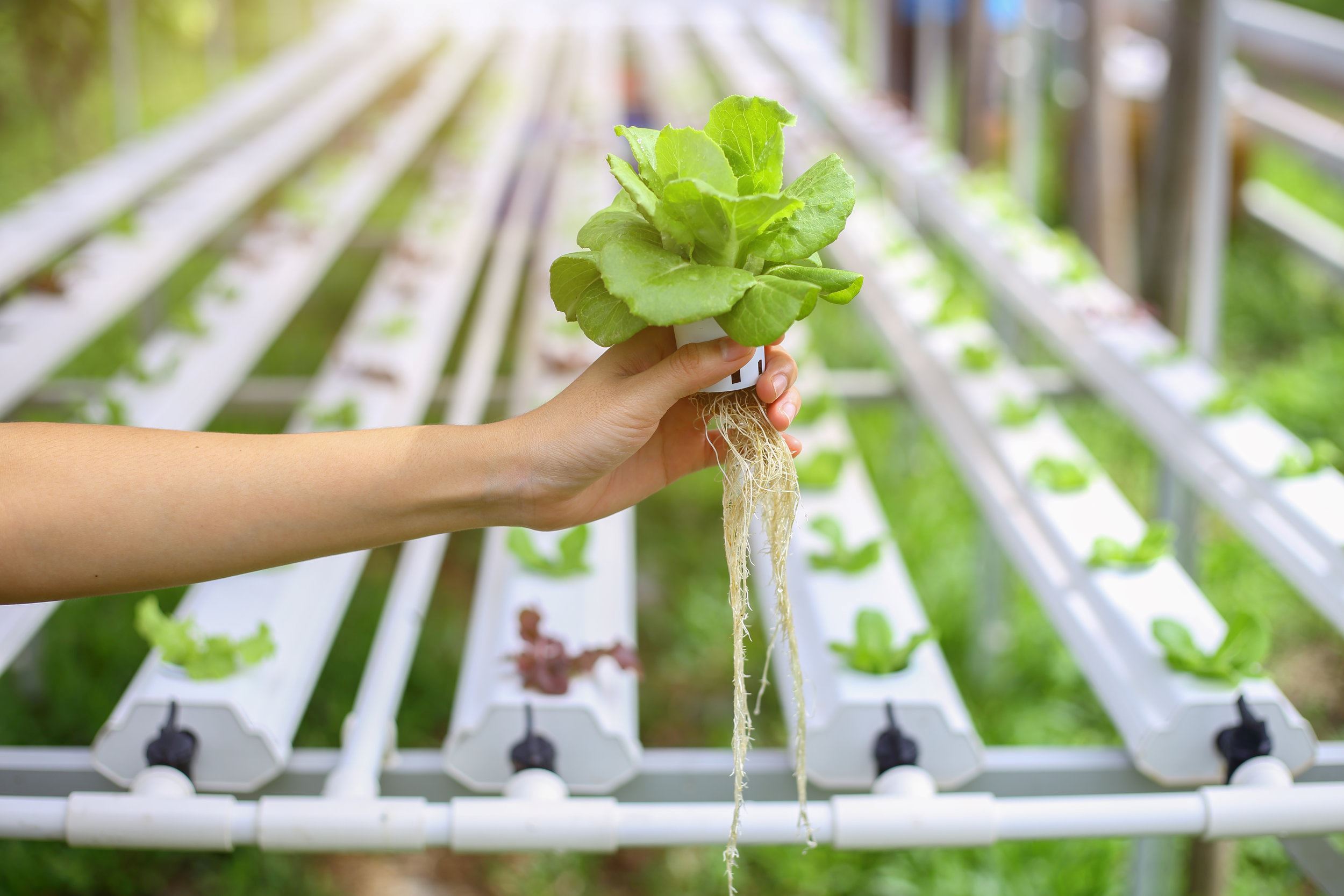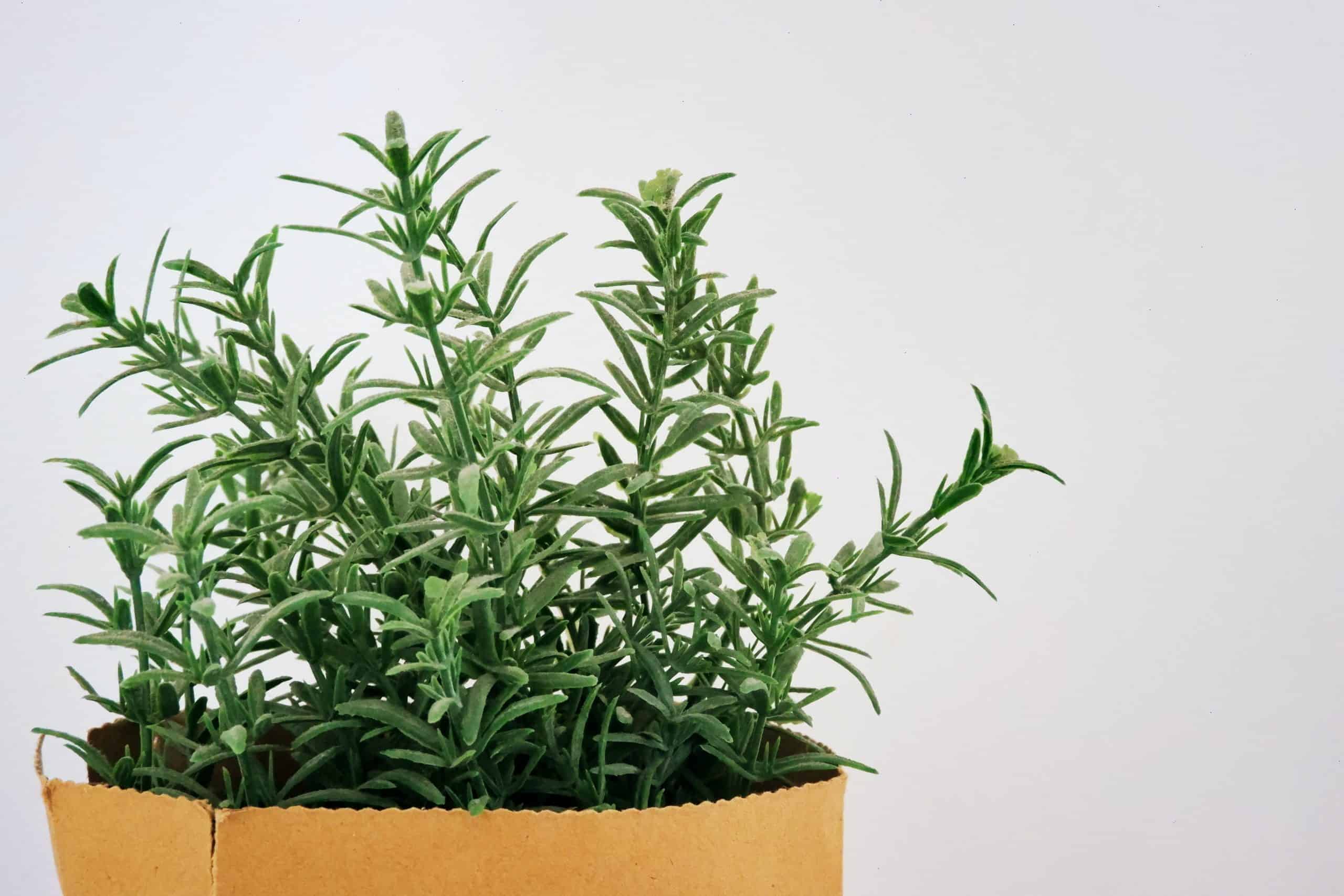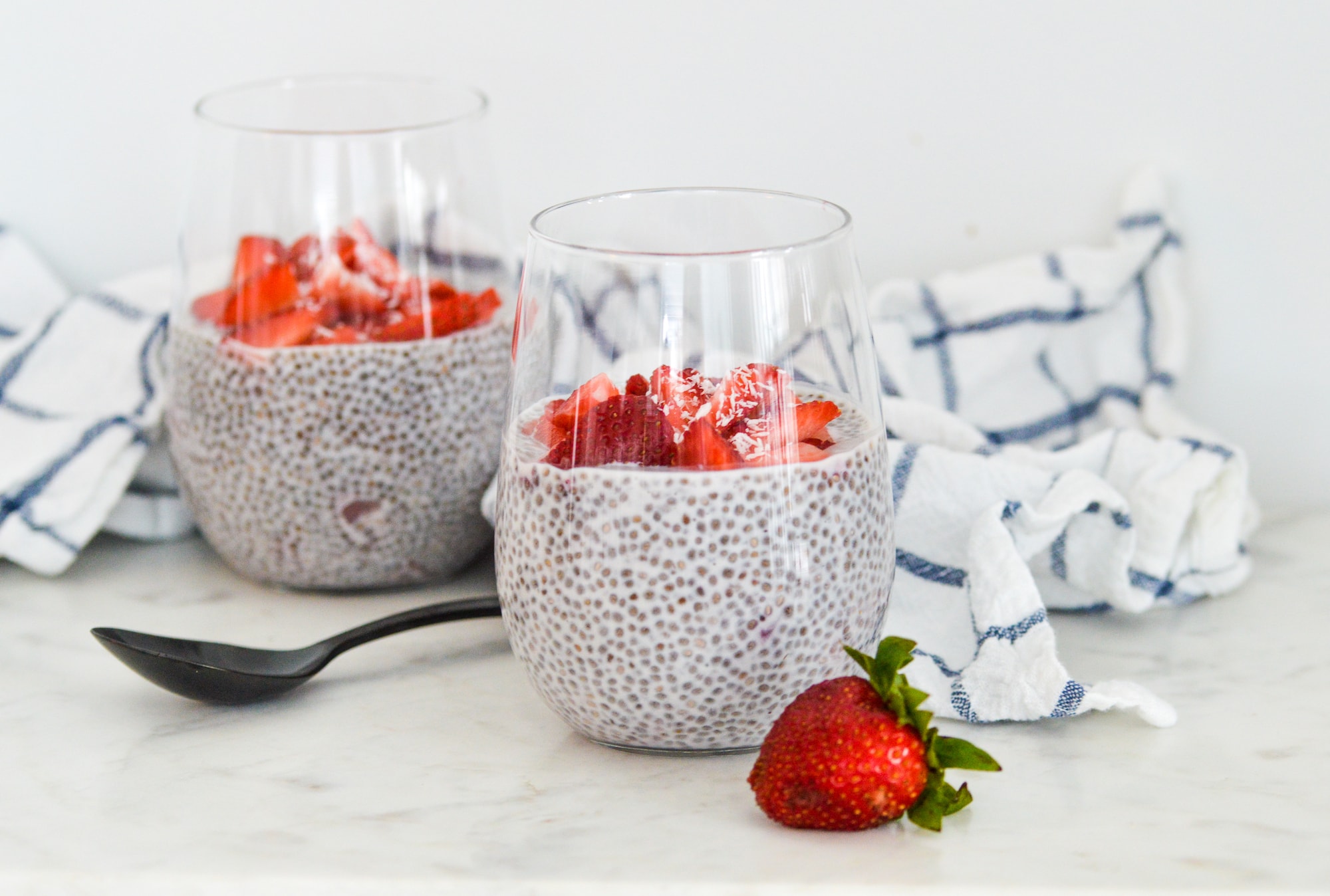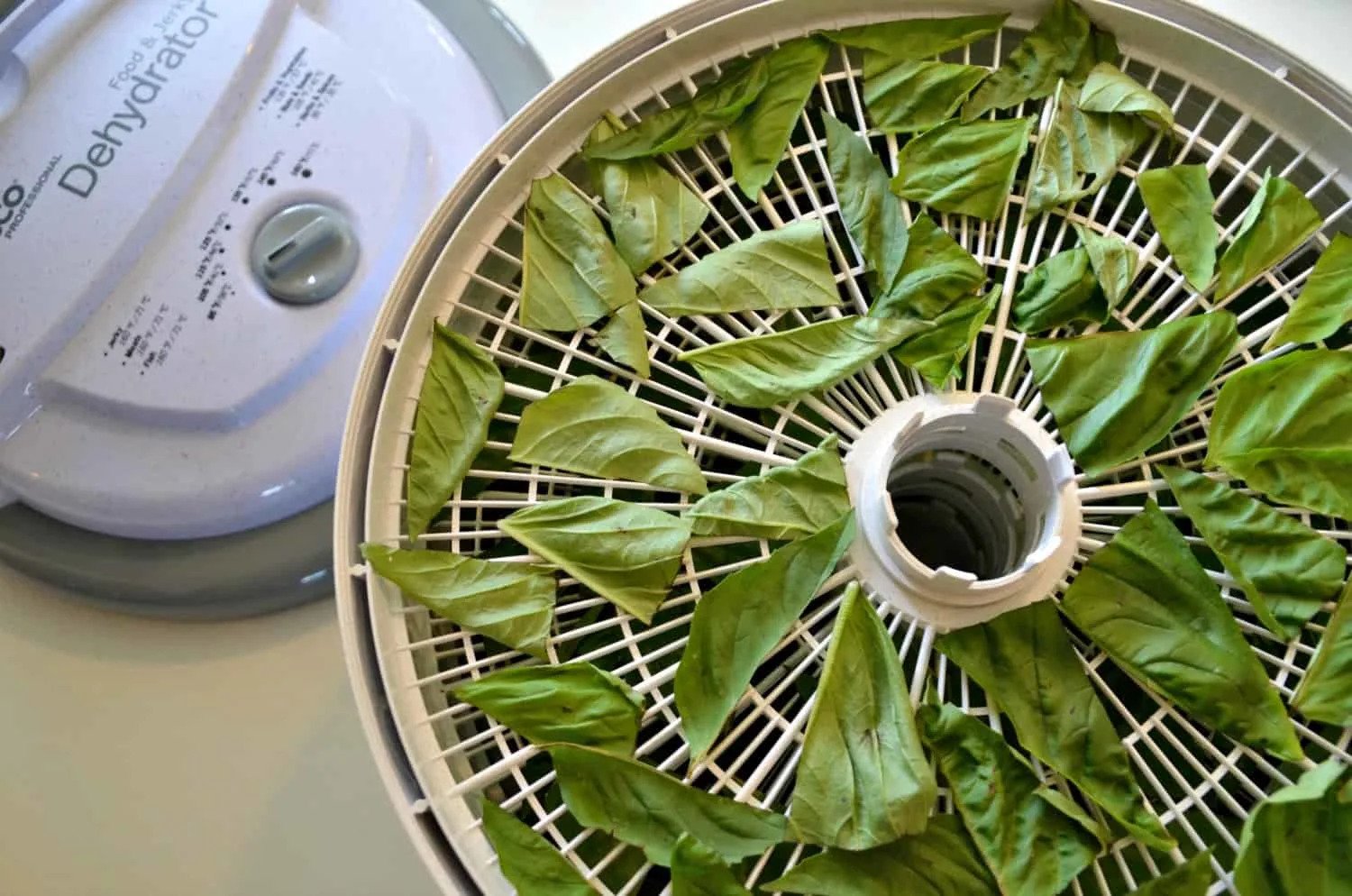Home>Gardening News and Trends>Latest News>What Vegetables Can I Dehydrate
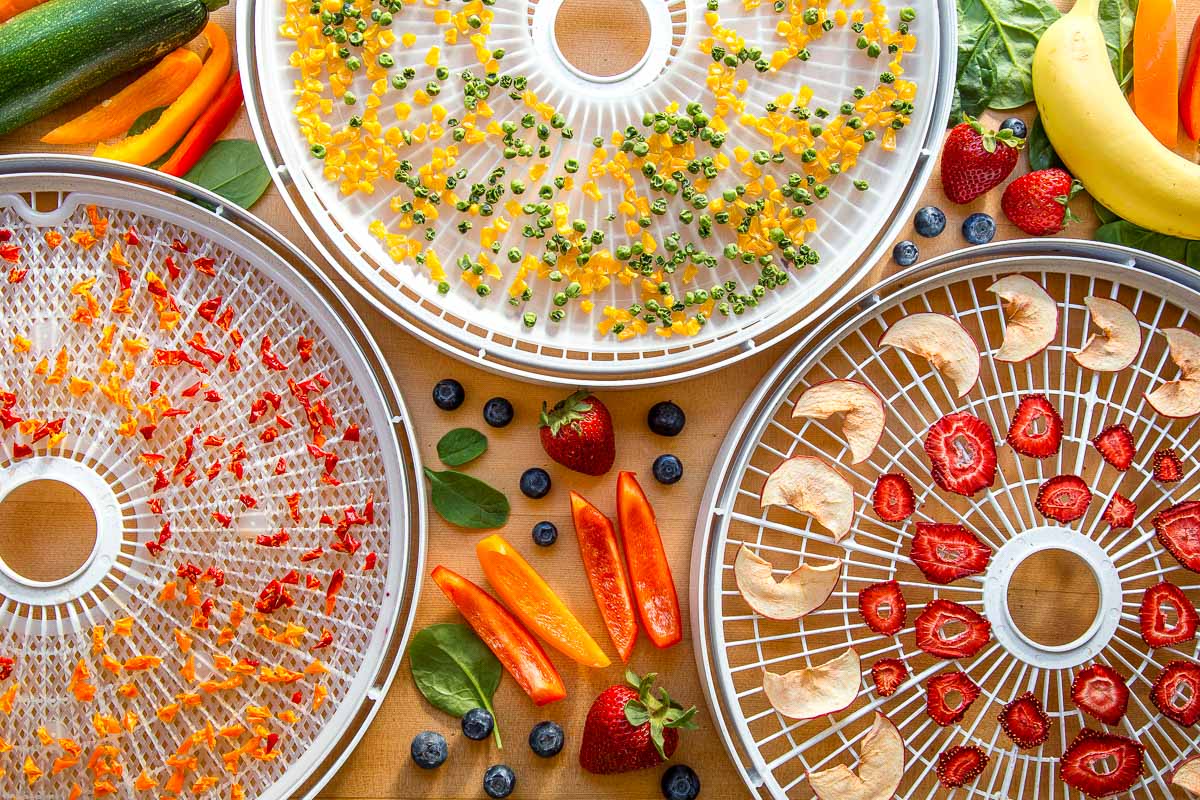

Latest News
What Vegetables Can I Dehydrate
Modified: January 22, 2024
Discover the latest news on dehydrating vegetables and learn what vegetables are best for dehydration. Find out how to preserve your favorite veggies for long-term storage.
(Many of the links in this article redirect to a specific reviewed product. Your purchase of these products through affiliate links helps to generate commission for Chicagolandgardening.com, at no extra cost. Learn more)
Table of Contents
Introduction
Welcome to the world of dehydrating vegetables! Dehydration is a timeless method of preserving food that not only extends the shelf life of vegetables but also intensifies their flavors. Whether you’re a seasoned gardener looking to preserve the harvest or a health-conscious individual seeking convenient and nutritious meal options, dehydrating vegetables is an excellent choice.
In today’s fast-paced lifestyle, it’s easy to overlook the importance of incorporating fresh vegetables into our diets. However, dehydrating vegetables offers a solution by allowing you to have a stockpile of nutrient-rich ingredients at your fingertips. Plus, with the added convenience of long shelf life, you won’t have to worry about your veggies spoiling before you get a chance to enjoy them.
Beyond practicality, dehydrating vegetables also opens up a world of culinary possibilities. Imagine having a variety of vegetables readily available for soups, stews, smoothies, or even as standalone healthy snacks. By removing the water content, dehydrated vegetables become lightweight and compact, making them perfect for camping trips, hiking adventures, or emergency food supplies.
But before you dive into the dehydrating world, it’s important to know the basics. This comprehensive guide will walk you through everything you need to know about dehydrating vegetables. From choosing the right vegetables and preparing them for dehydration to different methods and techniques, we’ll cover it all. By the end, you’ll be equipped with the knowledge and confidence to embark on your own dehydrating journey.
So, let’s get started and explore the wonderful world of dehydrated vegetables!
Benefits of Dehydrating Vegetables
Dehydrating vegetables comes with a multitude of benefits that make it a popular choice among home cooks, outdoor enthusiasts, and those seeking a convenient and nutritious way to incorporate more vegetables into their diet. Let’s explore some of the main advantages of dehydrating vegetables:
- Extended Shelf Life: Dehydrating vegetables removes the moisture content, which is a key factor in spoilage. By eliminating water, you effectively prolong the shelf life of your vegetables, allowing you to enjoy their goodness for months or even years if stored properly.
- Nutrient Retention: Dehydrating vegetables preserves the essential nutrients found in the fresh produce. While some vitamins and minerals may decrease slightly during the dehydration process, the overall nutrient content remains relatively intact. This means that you can still benefit from the vitamins, minerals, and antioxidants present in dehydrated vegetables.
- Convenience: Dehydrated vegetables are incredibly convenient to store, transport, and use. They take up minimal space and are lightweight compared to their fresh counterparts, making them a great option for camping trips, backpacking adventures, or even just keeping a backup supply in your pantry.
- Cost-effective: Dehydrating vegetables is a budget-friendly way to preserve excess harvest or take advantage of sales and discounts on fresh produce. By dehydrating your own vegetables, you not only save money in the long run but also have control over the quality and content of your preserved food.
- Intensified Flavor: Dehydration concentrates the natural flavors of vegetables, resulting in a more robust and intense taste. This can enhance the overall flavor profile of your recipes, especially in soups, stews, sauces, and other dishes where the flavor of the vegetables plays a prominent role.
By dehydrating vegetables, you can enjoy the benefits of extended shelf life, nutrient retention, convenience, cost-effectiveness, and intensified flavors. So, whether you’re looking to stock up on emergency food supplies, reduce food waste, or simply enjoy the convenience and flavor of dehydrated veggies, the advantages of dehydrating vegetables are difficult to ignore.
Choosing Vegetables for Dehydration
When it comes to choosing vegetables for dehydration, it’s essential to select the right ones that will yield the best results. Not all vegetables are suitable for dehydration, as some may not dehydrate well or may lose too much flavor during the process. Here are some factors to consider when choosing vegetables for dehydration:
- High Water Content: Vegetables with a high water content tend to dehydrate well. They are more likely to retain their shape and texture after dehydration. Examples of high water content vegetables include cucumbers, bell peppers, zucchini, and tomatoes.
- Dense Texture: Vegetables with a denser texture tend to dehydrate better than those with a more delicate structure. Crisp and firm vegetables, such as carrots, sweet potatoes, and green beans, are excellent candidates for dehydration.
- Flavor Intensity: Some vegetables have stronger and more concentrated flavors, which can become even more pronounced during dehydration. Consider selecting vegetables like onions, garlic, and mushrooms, as their flavors can add depth and richness to your dehydrated dishes.
- Proper Ripeness: It’s important to choose vegetables that are at their peak ripeness. Overripe or underripe vegetables may not dehydrate well and could result in subpar flavor and texture. Opt for vegetables that are firm, vibrant, and free from blemishes.
- Personal Preferences: Ultimately, the choice of vegetables for dehydration depends on your personal preferences and intended use. Consider the types of dishes or recipes you plan to use the dehydrated vegetables in and select vegetables that will complement those flavors.
Some popular choices for dehydrating vegetables include carrots, bell peppers, onions, tomatoes, zucchini, green beans, kale, and mushrooms. However, don’t limit yourself to just these options! Feel free to experiment with different vegetables and combinations to create unique flavor profiles.
It’s worth noting that certain vegetables require some pre-treatment before dehydration, such as blanching or lightly steaming, to enhance their shelf life and color retention. Make sure to follow specific guidelines for each vegetable to achieve the best results.
Remember, the key is to choose vegetables that have a high water content, dense texture, intense flavor, and are at the right level of ripeness. By selecting the right vegetables for dehydration, you’ll ensure that your dehydrated vegetables are not only delicious but also versatile for various culinary creations.
Preparing Vegetables for Dehydration
Properly preparing vegetables before dehydration is crucial to ensure optimal results in terms of flavor, texture, and shelf life. Here are some essential steps to follow when preparing vegetables for dehydration:
- Wash and Clean: Start by washing the vegetables thoroughly under running water to remove any dirt, debris, or residue. Use a vegetable brush if needed. This step helps to prevent any contaminants from being locked in during the dehydration process.
- Peel and Trim: Depending on the vegetable, you may need to peel or trim certain parts before dehydrating. For example, remove the outer skin of carrots or potatoes and trim off any bruised or discolored areas. However, keep in mind that in some cases, leaving the skin on can add extra flavor and nutrients.
- Slice or Dice: Next, slice or dice the vegetables into uniform pieces or strips. The size and thickness will depend on personal preference and the intended use of the dehydrated vegetables. Thicker slices may take longer to dehydrate, so keep that in mind when choosing the size.
- Pre-treatment: Some vegetables benefit from pre-treatment techniques to enhance their quality and preservation. Blanching, steaming, or lightly cooking certain vegetables before dehydration can help retain color, texture, and flavor. Follow specific guidelines for each vegetable to determine if pre-treatment is recommended.
- Optional Seasoning: If desired, you can add some seasoning or spices to the vegetables before dehydrating. This can enhance the flavor and versatility of the dehydrated vegetables. Common options include herbs, spices, salt, or even a light marinade. However, be mindful of the amount of seasoning used, as flavors can intensify during dehydration.
Once the vegetables are prepared, it’s time to move on to the dehydration process. Different methods can be used to dehydrate vegetables, such as air drying, using a dehydrator, or an oven. The choice of method depends on personal preference, available equipment, and the type of vegetables being dehydrated.
Properly prepared vegetables are more likely to dehydrate evenly and retain their quality throughout the process. Taking the time to wash, peel, trim, slice, and potentially pre-treat the vegetables will help ensure that your dehydrated vegetables turn out delicious and ready to be incorporated into a wide variety of dishes.
Methods for Dehydrating Vegetables
There are several methods you can choose from when it comes to dehydrating vegetables. Each method has its own advantages and can produce excellent results. Here are three common methods for dehydrating vegetables:
- Air Drying: Air drying vegetables is the most traditional method of dehydration. It involves placing the prepared vegetables in a well-ventilated area with good air circulation. This method requires low maintenance and minimal equipment. However, it can be time-consuming and may not be suitable in areas with high humidity or fluctuating temperatures.
- Dehydrator: A food dehydrator is a popular choice for dehydrating vegetables due to its convenience and consistent results. Dehydrators have trays with mesh or solid sheets where you place the sliced or diced vegetables. The machine circulates warm air to evenly remove moisture and dehydrate the vegetables. Dehydrators come in various sizes and have adjustable temperature controls, making the process efficient and customizable.
- Oven Drying: If you don’t have a dehydrator, you can still dehydrate vegetables using your oven. To do this, spread the prepared vegetables on a baking sheet lined with parchment paper or a silicone mat. Set the oven to a low temperature, preferably around 140°F (60°C), and allow the vegetables to dry out slowly. Keep the oven door slightly ajar to allow moisture to escape. Note that oven drying may take longer than using a dehydrator and can impact energy consumption.
Regardless of the method you choose, there are a few general guidelines to follow:
- Spread the vegetables in a single layer to ensure proper airflow and even drying.
- Rotate or flip the vegetables occasionally to promote uniform drying.
- Monitor the drying time to prevent over-drying or under-drying.
The drying time for vegetables can vary depending on the method, the type of vegetable, and the desired level of dehydration. Generally, vegetables are considered fully dehydrated when they are crispy, brittle, and break easily.
It’s important to note that proper storage of dehydrated vegetables is crucial to maintain their quality and extend their shelf life. We’ll cover this topic in the next section.
Choose the method that suits your needs and equipment availability. Whether you opt for air drying, a dehydrator, or the oven, each method can help you achieve flavorful and long-lasting dehydrated vegetables.
Storing Dehydrated Vegetables
Proper storage is essential to maintain the quality, flavor, and shelf life of dehydrated vegetables. Here are some guidelines to follow when storing your dehydrated vegetables:
- Cool and Dry Environment: Store your dehydrated vegetables in a cool, dry place away from direct sunlight. Exposure to heat, moisture, and light can degrade the quality of the vegetables, leading to loss of flavor and nutrient content. Ideally, aim for a storage area with temperatures below 70°F (21°C) and low humidity.
- Airtight Containers: Use airtight containers such as glass jars, resealable bags, or vacuum-sealed bags to prevent oxygen, moisture, and pests from damaging the dehydrated vegetables. Properly sealed containers help maintain the freshness and extend the shelf life of the vegetables.
- Add Oxygen Absorbers: Consider adding oxygen absorbers to the containers to further enhance the storage quality. Oxygen absorbers help remove any residual oxygen, minimizing the risk of spoilage and maintaining the color, flavor, and texture of the dehydrated vegetables. Be sure to follow the instructions provided with the oxygen absorbers for the correct amount to use.
- Label and Date: Properly label each container with the name of the vegetable and the date of dehydration. This helps you keep track of the storage time and ensures that older batches are used first. It’s also useful to note any specific guidelines or rehydration instructions on the labels.
- Storage Life: Dehydrated vegetables can have a long shelf life if stored correctly. Generally, they can last anywhere from six months to one year or even longer. However, the quality and flavor may deteriorate over time. It’s best to consume the vegetables within the first several months for the best taste and nutritional value.
Additionally, it’s a good practice to periodically check your stored dehydrated vegetables for any signs of mold, odd odors, or texture changes. If you notice any of these indicators, discard the affected vegetables to prevent spoilage from spreading to the rest of your stored supply.
Remember, proper storage practices are crucial to maximize the shelf life and maintain the quality of your dehydrated vegetables. By following these guidelines, you can enjoy the convenience and nutritional benefits of your preserved vegetables for an extended period.
Tips for Rehydrating Dehydrated Vegetables
Rehydrating dehydrated vegetables is a simple process that brings the vegetables back to their original texture and flavor. Here are some useful tips to ensure successful rehydration:
- Proportions: The ratio of water to dehydrated vegetables may vary depending on the vegetable and personal preference. As a general guideline, start with a 1:1 ratio of water to vegetables. Adjust the amount of water as needed to achieve the desired texture.
- Pre-soaking: Some vegetables benefit from a pre-soaking step before cooking. This can help speed up the rehydration process. Place the dehydrated vegetables in a bowl of cool water and let them sit for about 15-30 minutes. Drain off any excess water before using the vegetables in your recipe.
- Simmering or Boiling: To rehydrate the vegetables, bring a pot of water to a simmer or boil, depending on the vegetable. Add the dehydrated vegetables and cook them until they reach the desired tenderness. Keep in mind that cooking times may vary depending on the size and thickness of the vegetables.
- Seasoning: While dehydrated vegetables may retain some of their original flavor, they may benefit from additional seasoning and spices during the rehydration process. Add herbs, spices, or seasonings that complement the flavors of the vegetables to enhance the overall taste of your dish.
- Adding to Recipes: Rehydrated vegetables can be added directly to soups, stews, pasta dishes, or any recipe that requires vegetables. They will absorb the flavors of the dish and contribute texture and nutritional value. Alternatively, you can rehydrate the vegetables separately and use them as standalone side dishes or in salads.
- Experimentation: Don’t be afraid to experiment with different methods and flavors when rehydrating dehydrated vegetables. Adjust the cooking time, seasoning, and water amount to suit your taste preferences and the specific recipe you’re preparing.
Rehydrated vegetables can be just as versatile and delicious as fresh vegetables, especially when added to dishes that benefit from their intensified flavor. With a little practice and experimentation, you’ll be able to achieve the perfect rehydration every time.
Keep in mind that rehydrated vegetables may have a slightly softer texture compared to fresh vegetables. However, they still provide essential nutrients and can elevate the taste and visual appeal of your meals.
Now that you have these tips in hand, go ahead and start incorporating dehydrated vegetables into your recipes. You’ll be amazed at the convenience, flavor, and variety they bring to your table.
Recipes and Ideas for Using Dehydrated Vegetables
Dehydrated vegetables are incredibly versatile and can be used in a wide range of recipes. Here are some ideas to inspire you to get creative in the kitchen:
- Soup and Stews: Dehydrated vegetables are perfect for adding flavor and nutrition to soups and stews. Simply rehydrate the vegetables according to the instructions, then add them to your favorite soup or stew recipe. They can add depth and texture to classic recipes like vegetable soup, minestrone, or beef stew.
- Salads: Add a nutritional boost to your salads by sprinkling in some dehydrated vegetables. They can bring a delightful crunch and concentrated flavor to leafy green salads, grain bowls, or pasta salads. Mix in some dehydrated bell peppers, tomatoes, or carrots for a burst of color and taste.
- Pasta and Rice Dishes: Incorporate dehydrated vegetables into your pasta or rice dishes for added texture and flavor. Rehydrate the vegetables and toss them with cooked pasta, rice, or quinoa. You can also sauté the rehydrated vegetables with garlic and olive oil before mixing them into your dish for an extra kick of flavor.
- Casseroles and One-Pot Meals: Dehydrated vegetables work exceptionally well in casseroles and one-pot meals. They can be easily mixed in with other ingredients, such as grains, meats, or legumes, to create hearty and nutritious meals. Consider adding them to dishes like baked ziti, shepherd’s pie, or quinoa casserole.
- Snacks: Enjoy dehydrated vegetables as a healthy and flavorful snack on their own. They make a great alternative to chips or crackers. Pack them in your lunchbox, take them on hikes, or enjoy them during road trips. Mix different varieties, such as dehydrated carrots, snap peas, and sweet potatoes, for a satisfying and nutritious snack mix.
- Sauces and Dips: Blend or rehydrate dehydrated vegetables to make homemade sauces and dips. You can create a rich and flavorful tomato sauce by rehydrating dehydrated tomatoes and adding them to a sautéed garlic and onion base. Experiment with different combinations of dehydrated vegetables to create unique and tasty dips like roasted red pepper dip or sun-dried tomato hummus.
These are just a few ideas to get you started, but don’t be afraid to let your creativity shine in the kitchen. The possibilities with dehydrated vegetables are endless!
Remember, the key is to experiment, adjust seasoning to taste, and enjoy the enhanced flavors and textures that dehydrated vegetables bring to your recipes. Whether you’re making comfort food, healthy salads, or delicious snacks, dehydrated vegetables can be a game-changer in your culinary adventures.
Conclusion
Dehydrating vegetables is a rewarding and practical way to preserve the freshness and nutrients of your favorite produce. By removing the water content, dehydrated vegetables become lightweight, compact, and have a long shelf life, making them a convenient addition to your pantry. The benefits of dehydrating vegetables go beyond preservation, as it also intensifies their flavors and opens up a world of culinary possibilities.
When choosing vegetables for dehydration, opt for those with high water content, dense texture, and intense flavors. Properly preparing the vegetables by washing, slicing, and potentially pre-treating them ensures optimal results. Additionally, selecting an appropriate dehydration method, such as air drying, using a dehydrator, or oven drying, is key to achieving quality dehydrated vegetables.
Storing dehydrated vegetables in a cool, dry, and airtight environment will help maintain their freshness and quality. Don’t forget to label and date your containers for proper organization. When it’s time to use your dehydrated vegetables, follow the recommended rehydration tips to bring them back to their original texture and flavors.
From soups and salads to pasta dishes and snacks, dehydrated vegetables add a burst of flavor, texture, and nutritional value to a variety of recipes. Get creative in the kitchen and explore the countless ways to incorporate dehydrated vegetables into your favorite dishes.
Embrace the wonderful world of dehydrated vegetables and enjoy the convenience, versatility, and deliciousness it brings to your meals. Start dehydrating and uncover the endless culinary possibilities that await you!
